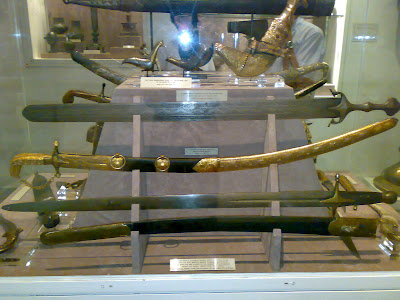 Today, we woke up bright and early- and I mean, bright and early by 5.30am all of us were awake and heading down for breakfast at 6am. We were heading to Bukit Beruang to do an Ecological study on the density and distribution of Tongkat Ali int he Heath Forest there.
Today, we woke up bright and early- and I mean, bright and early by 5.30am all of us were awake and heading down for breakfast at 6am. We were heading to Bukit Beruang to do an Ecological study on the density and distribution of Tongkat Ali int he Heath Forest there.
For those of you who haven't seen what Tongkat Ali is, here's a picture.
 Tongkat Ali is used for its medicinal properties and seems to be the Malay cousin of ginseng. It has anti-malarial, anti-pyretic, anti-ulcer properties as well as its famous testosterone enhancing capabilities.
Tongkat Ali is used for its medicinal properties and seems to be the Malay cousin of ginseng. It has anti-malarial, anti-pyretic, anti-ulcer properties as well as its famous testosterone enhancing capabilities.
We started our day with the fabulous Bike Brothers: our 2 local traffic police escorts riding with us to ensure speedy and safe passage
When we arrived at Bukit Beruang, it was a strange site that greeted me- the forest floor was sand, as in fine, white beach sand. Heath forests are known as kerangas forest by the Iban to refer to sites where rice cannot be successfully cultivated due to the poor nutrient density of the soil. According to Wikipedia "Heath forest is a type of tropical moist forest found in areas with acidic, sandy soils that are extremely nutrient-poor. Notable examples are the Rio Negro campinarana of the Amazon Basin in South America, and the Sundaland heath forests (also known as Kerangas forests) of Borneo and neighboring islands."
In fact, the sand is actually high grade silica that can be used for glass and silicon making by the government has decided to preserve this ecological system.
Before we began our study, we were given a briefing by Miss Jenny, Biology teacher from SOAS
From the study materials given to us by Cikgu Jenny from SOAS, we learnt that "the Tongkat Ali plant is a small evergreen plant growing up to 15m tall with spirally arranged pinnate leaves of 20-40cm long with 13-41 leaflets. The flowers are dioecious, with male and female flowers on different trees. They are produced in large pinicles, each flower with 5-6 very small petals The fruit is green ripening to a dark red, 1-2cm long and 0.5-1.0cm broad"
Once the groups were briefed on their tasks, we headed into the forest. Now this is no 'kuching-kurat' forest that we see in Singapore, this is the real jungle,man! I made a cautious attempt to track one group down and see how they were getting on with their preparations with another teacher from SOAS, Cikgu Yusan:
First off, the groups would need to mark out a 10m by 10m grid and divide it into 4 quadrants. Students were given a GPS decie to identify the co-ordinates of the 4 corners of each quadrant (Yup, a GPS device-don't play play arh)
By counting the total number of plant individuals, they could then determine the plant density in their assigned quadrant:
Also the boys would be required to determine the light intensity in the forest using a photometer. Measurements were made at the undergrowth, forest gap and edges of the forest. Here we see Wee Bian from VS doing the measurements:
Soil pH was also measured- here we see Amirul from SOAS doing the measurements for his group.
When all their measurements are complete, the group plots their site graph and density diagram with compass and tape measure. They identify the number, location of Tongkat Ali in the various stages of growth (seedling, juvenile and adult stage)
Despite the hot temperature (34.7 degress celsius- in the shade!), the insects and working in the confines of the jungle, both the boys from VS and SOAS solidered on and took a well-deserved break by 1pm for lunch. Tomorrow, they will collate their results and do a presentation on Thu.
3 Cheers for all the boys and teachers for a great team effort today! VS boleh!, SOAS lagi boleh!
 We ended the day shopping at the Mall where all of us enjoyed the cool air after a hot day and did some retail therapy.
We ended the day shopping at the Mall where all of us enjoyed the cool air after a hot day and did some retail therapy.






 As we walked into the auditorium of SOAS school for the night of cultural performances, we were really made to feel like royalty as they showered us with rice and music.
As we walked into the auditorium of SOAS school for the night of cultural performances, we were really made to feel like royalty as they showered us with rice and music.



.jpg)







.jpg)
.jpg)











